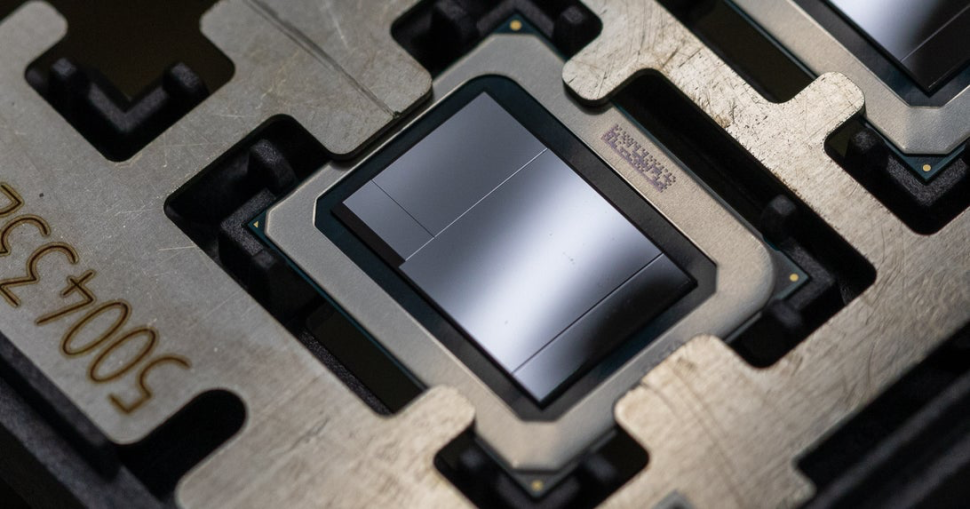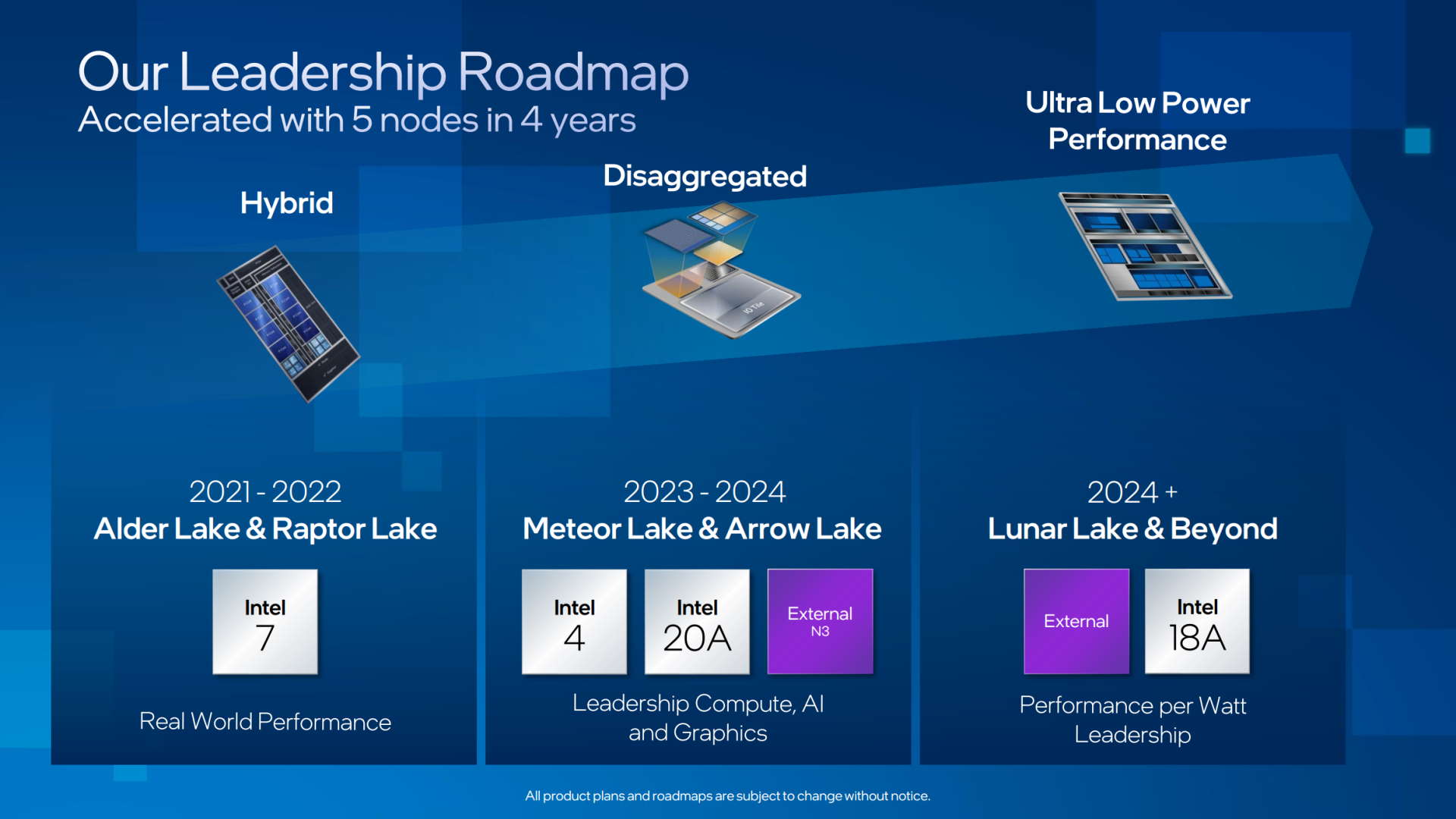Intel says Meteor Lake is still 'on schedule' for 2023 despite delay rumours
Though TSMC is going to be manufacturing the majority of Intel's next next-gen consumer processor.

Intel has debunked the rumours of a Meteor Lake delay, once more asserting a 2023 release for its grand new chiplet-esque CPU design. With a preview ahead of its Hot Chips presentation today, Intel has described some more detail of its upcoming Meteor Lake processor design, laying to rest the rumours that it might not launch until 2024.
Meteor Lake is the next next-gen chip from Intel, a whole new 3D chiplet design to follow the more traditional Raptor Lake release in the next couple months. Though one of the interesting things to note about Meteor Lake is that it's mostly being manufactured by TSMC, not Intel itself.
Meteor Lake processors will be made of four discrete chips (Intel calls them tiles), brought together with through silicon vias (TSVs) connecting them to a base die. These will be the main compute tile, the graphics tile, the SoC tile, and the I/O tile. Intel is using its 3D Foveros chip-stacking packaging tech to connect them through that base silicon slice.
There was an initial delay to the mass production of its Intel 4 (nominally 7nm) process from 2022 to the start of 2023—which is going to be the lithography used for the Meteor Lake compute tile—and then Trendforce reported that orders for the 3nm TSMC process it claimed to be using for the GPU tile had been cut from Intel's TSMC pre-order.
Intel's Boyd Phelps is reported by PC Watch (via Benchlife) as saying "Meteor Lake is on schedule" at a media roundtable ahead of Hot Chips, presumably in reference to these Trendforce rumours.
Back in February Intel had said it was using an external N3 process for Meteor Lake and subsequently Arrow Lake, it is now being suggested that it's using a TSMC N5 node for Meteor Lake's graphics. That would explain why a shift in N3 orders hasn't affected the timing for Meteor Lake's release, and if there's one thing Intel needs to do with its processors it's just keep them coming on time.



Alongside a rumoured N5 lithography for its GPU tile, it is also said to be using a TSMC N6 process for the I/O and SoC tiles on the chip. With Intel manufacturing the 7nm compute tile and the 22nm base die for the packaging, and TSMC creating a further three tiles, you've got a contract manufacturer making the majority of core components for an Intel chip.
Keep up to date with the most important stories and the best deals, as picked by the PC Gamer team.
That's potentially a smart move by Intel, allowing it to separate out the manufacturing demands, and focus on the stuff it does really well, namely the compute component.
Intel is set for a more detailed Meteor Lake presentation at Hot Chips 34 today, so fingers crossed we'll get some more juicy looks at Intel's first consumer chiplet processor.

Looking further ahead, Intel says it will start to use the Universal Chiplet Interconnect Express (UCIe) standard for its processor designs in the latter half of the decade.
"We plan to use UCIe in later products than Arrow Lake," says Phelps. That would put the efficiency focused Lunar Lake potentially as the first to use the new standard.
UCIe is being worked on by Intel, AMD, Arm, Microsoft, Google, TSMC, and many others, after Intel donated the open standard to the consortium as a whole, and claims that such an open chiplet ecosystem could drive down costs, deliver higher performance, and lower power.
Who wouldn't want that?
Best CPU for gaming: Top chips from Intel and AMD
Best gaming motherboard: The right boards
Best graphics card: Your perfect pixel-pusher awaits Best SSD for gaming: Get into the game first

Dave has been gaming since the days of Zaxxon and Lady Bug on the Colecovision, and code books for the Commodore Vic 20 (Death Race 2000!). He built his first gaming PC at the tender age of 16, and finally finished bug-fixing the Cyrix-based system around a year later. When he dropped it out of the window. He first started writing for Official PlayStation Magazine and Xbox World many decades ago, then moved onto PC Format full-time, then PC Gamer, TechRadar, and T3 among others. Now he's back, writing about the nightmarish graphics card market, CPUs with more cores than sense, gaming laptops hotter than the sun, and SSDs more capacious than a Cybertruck.


